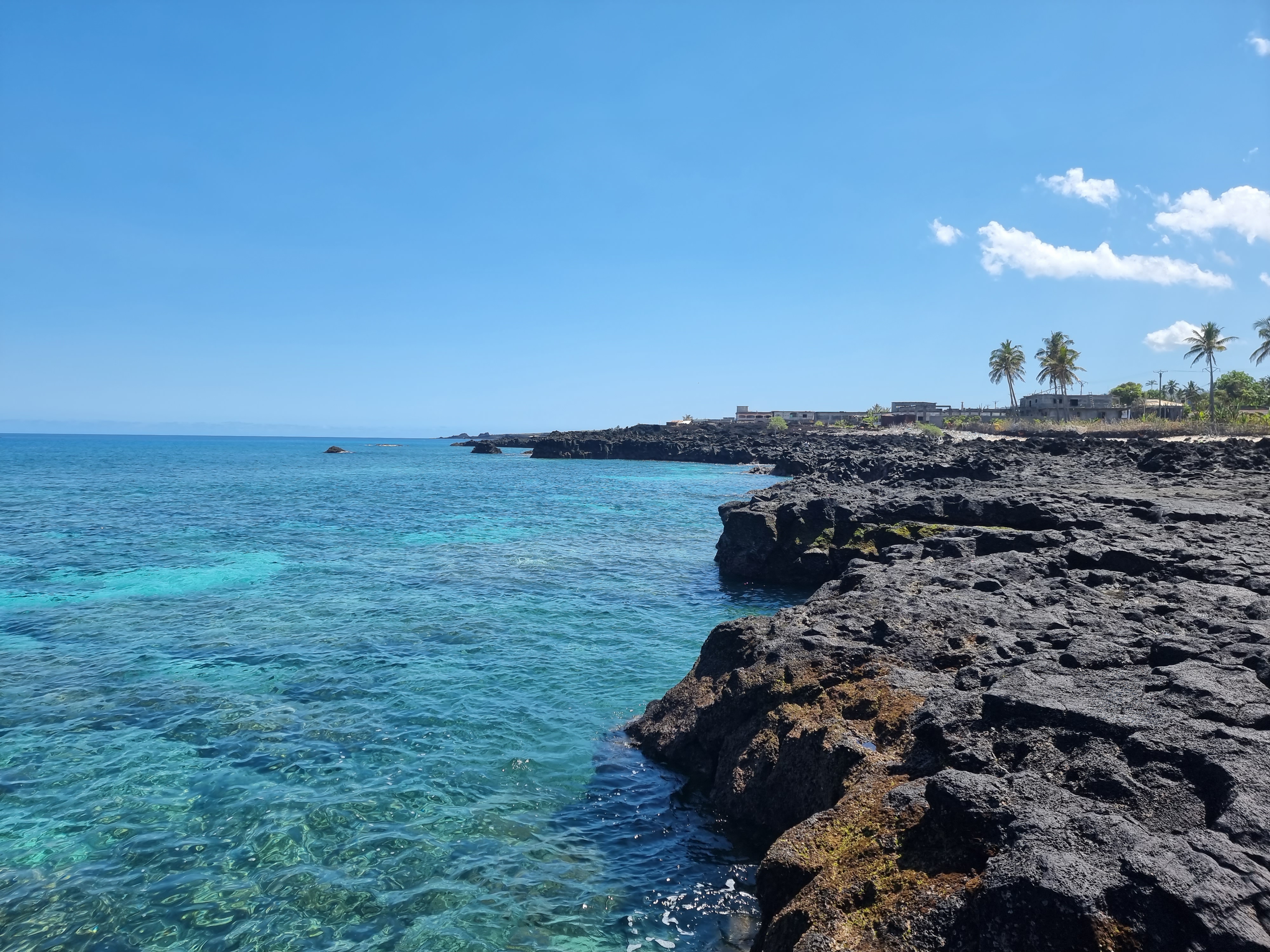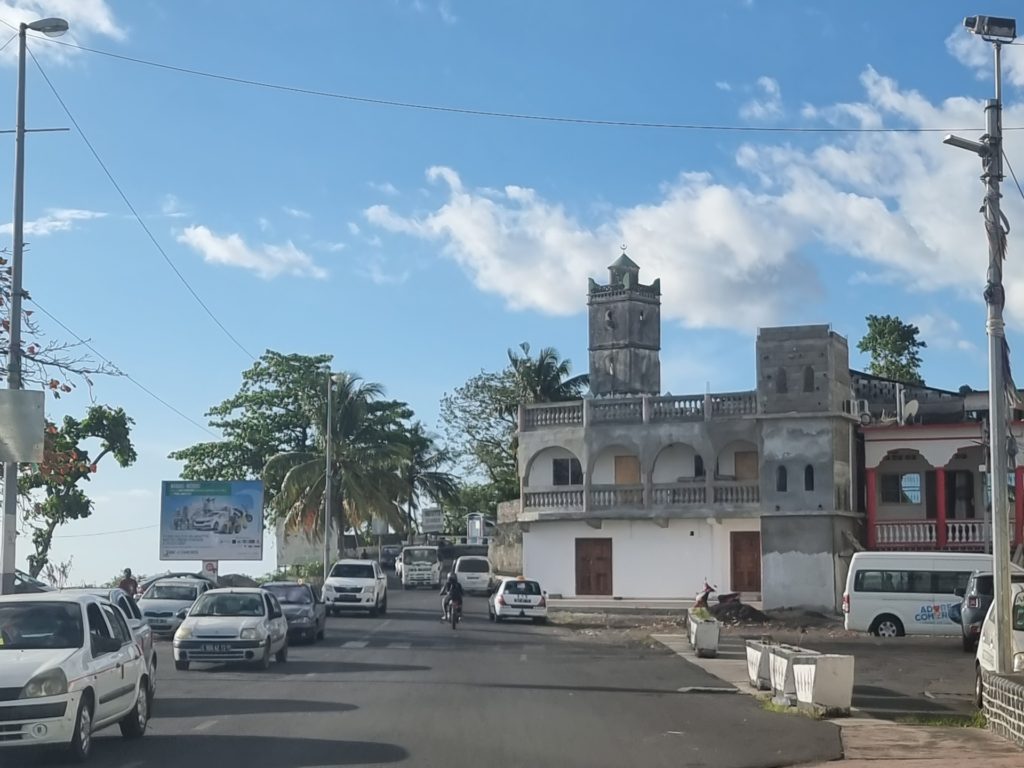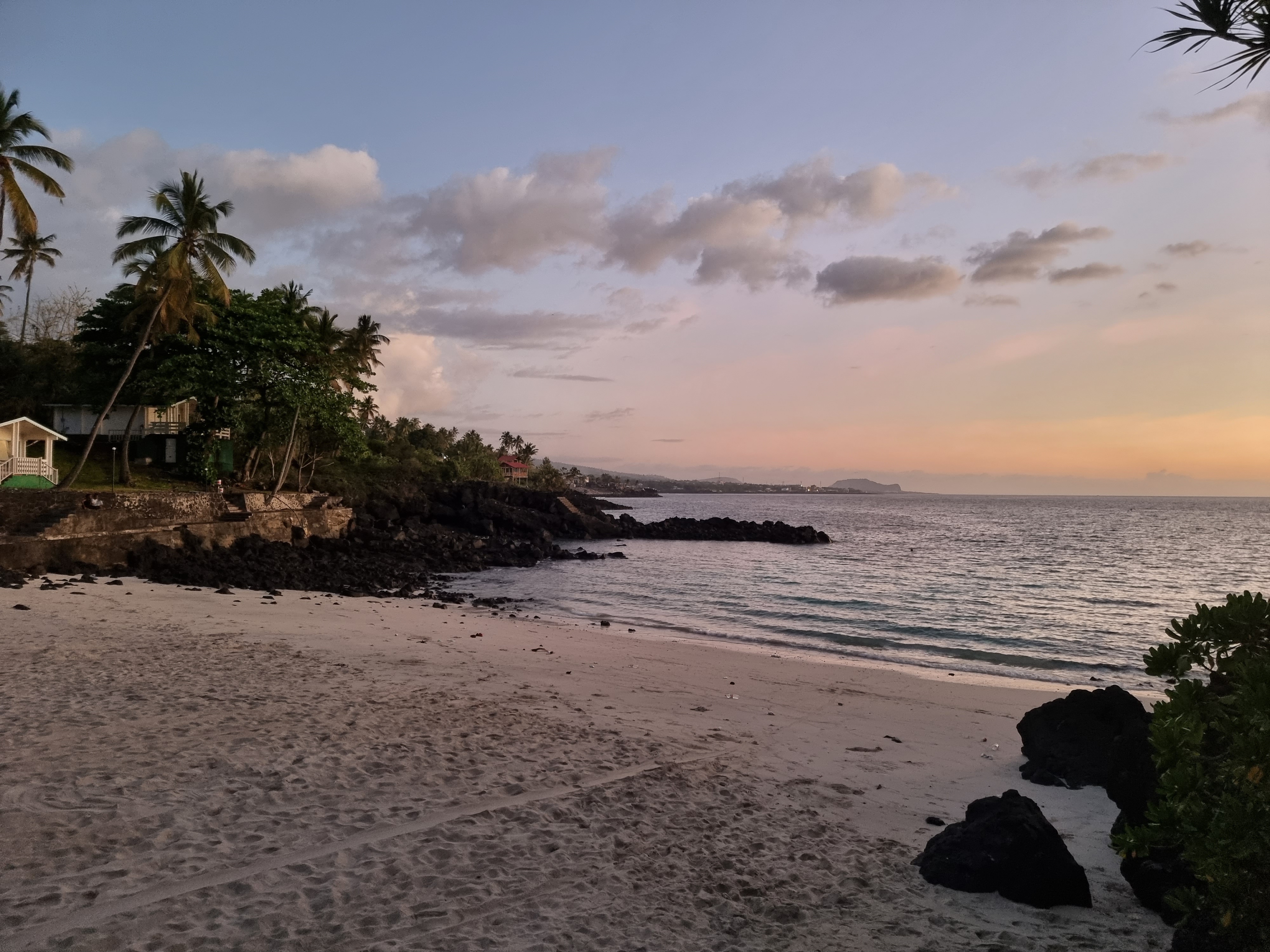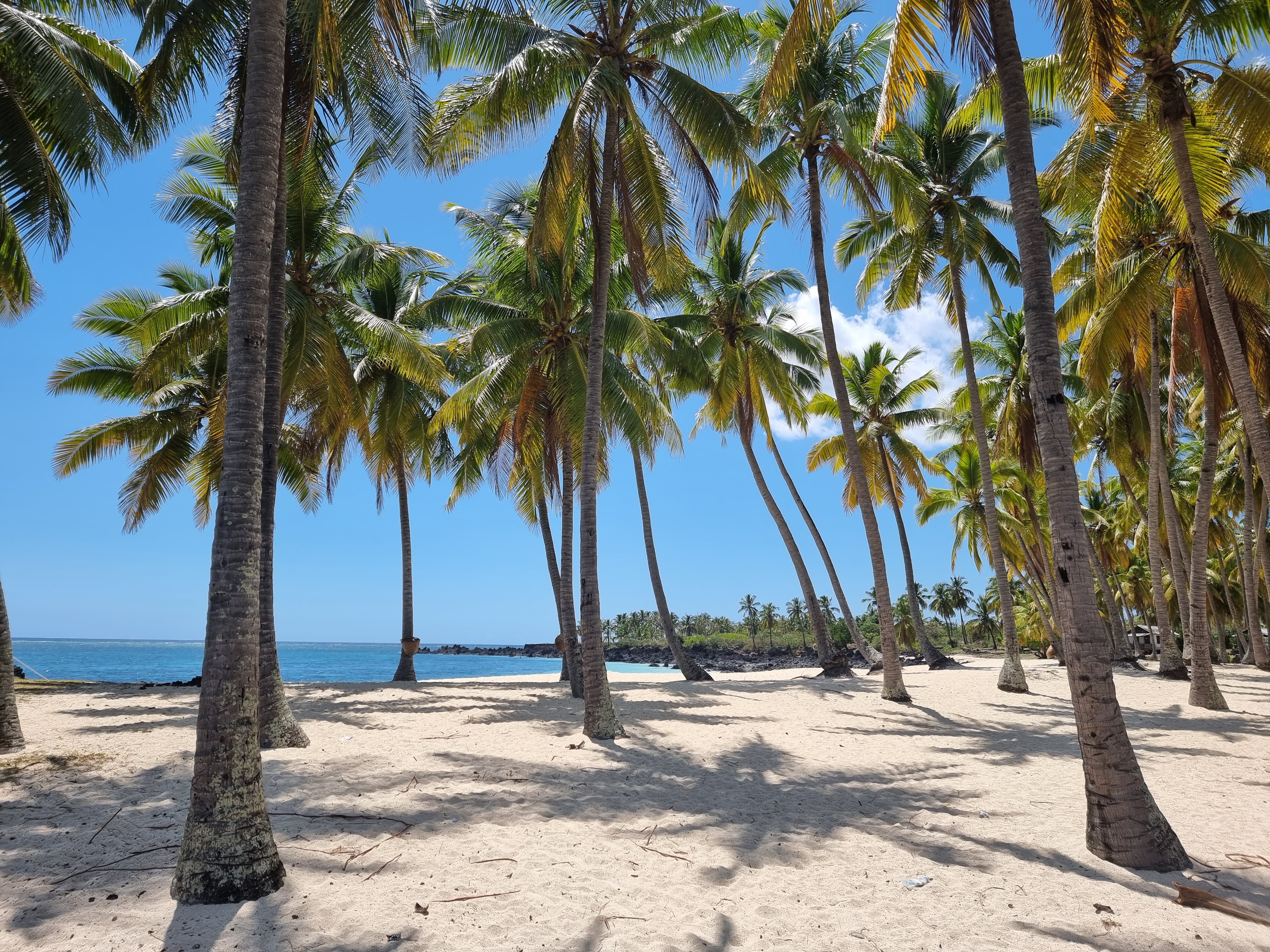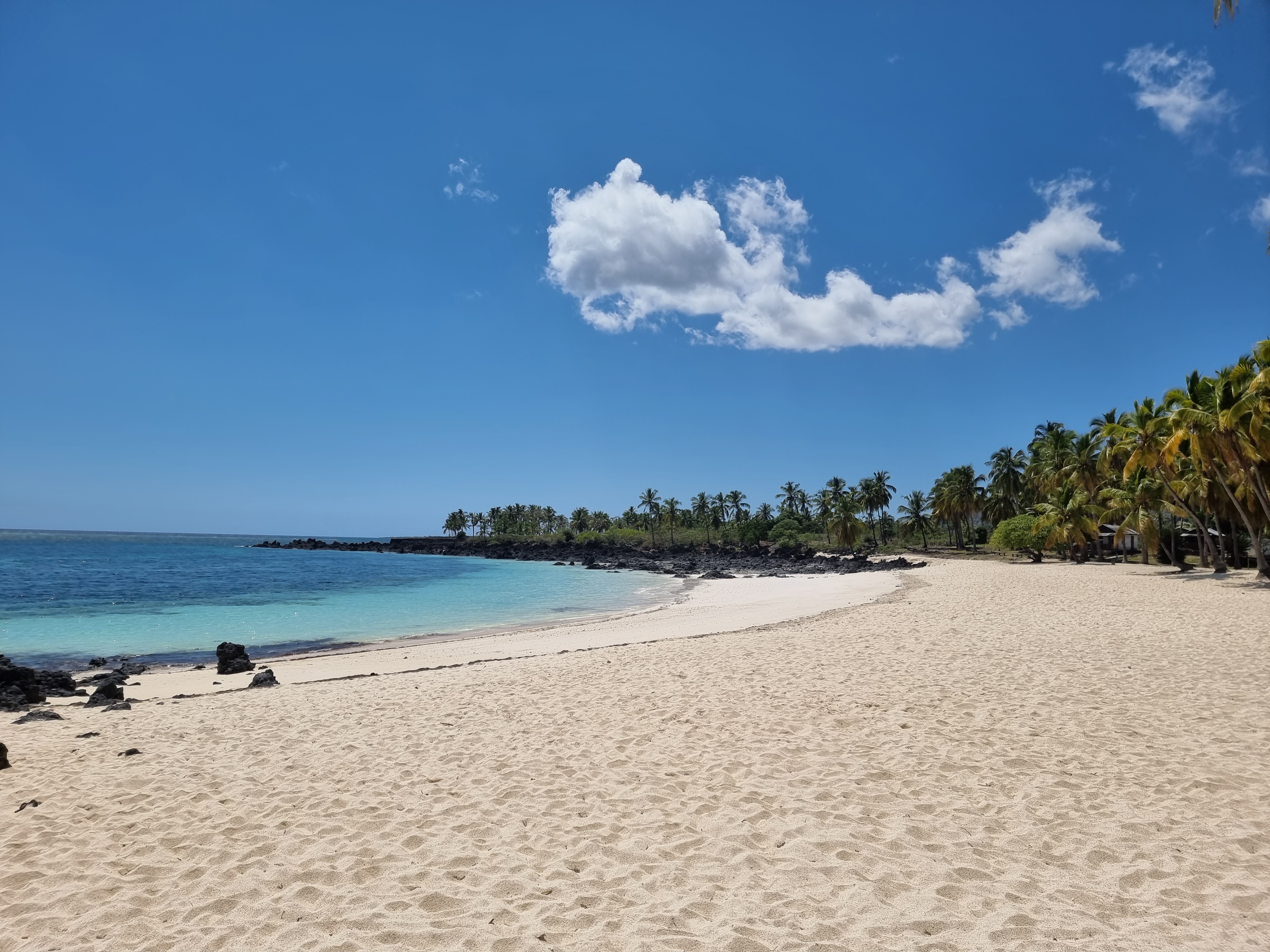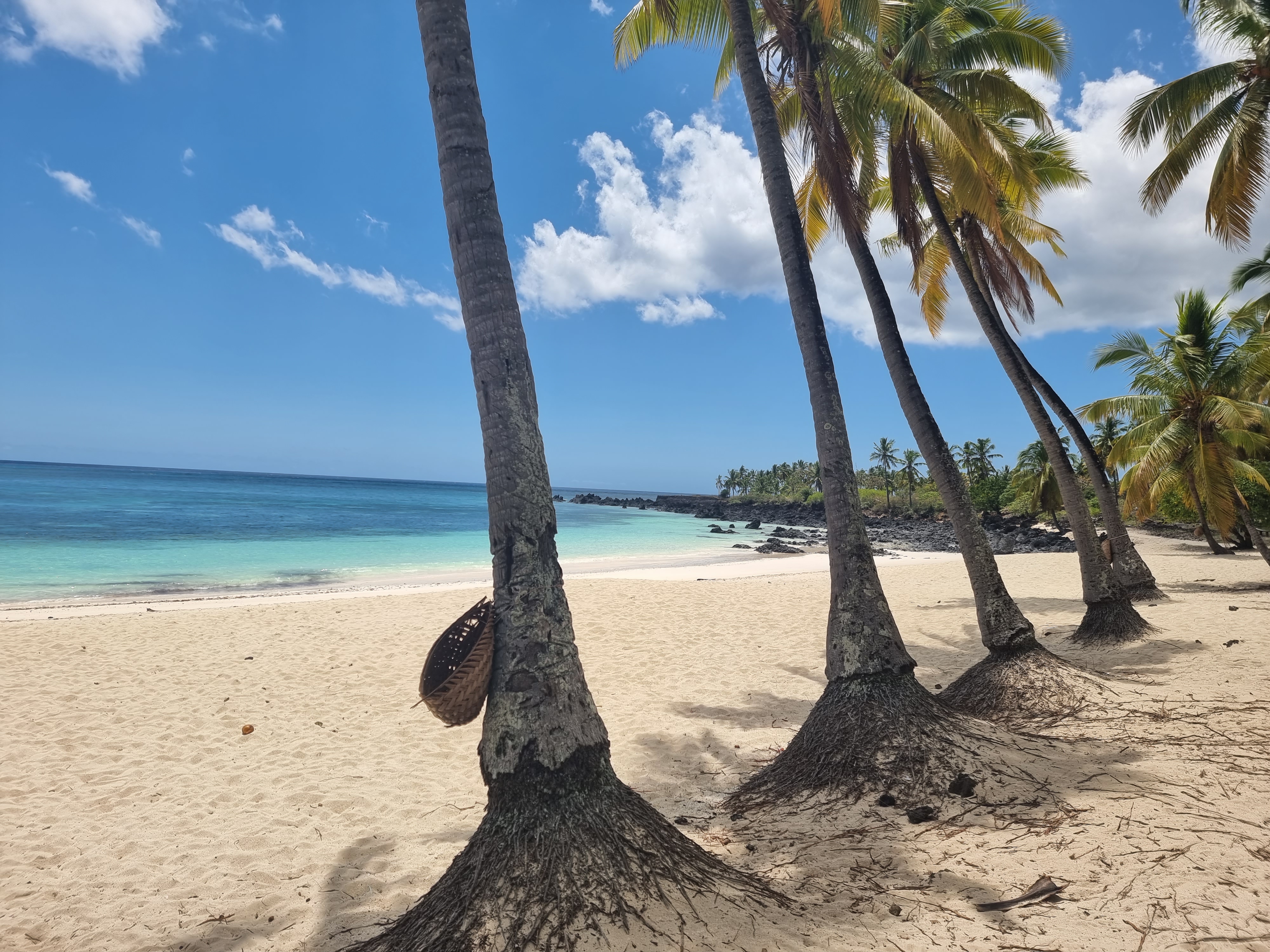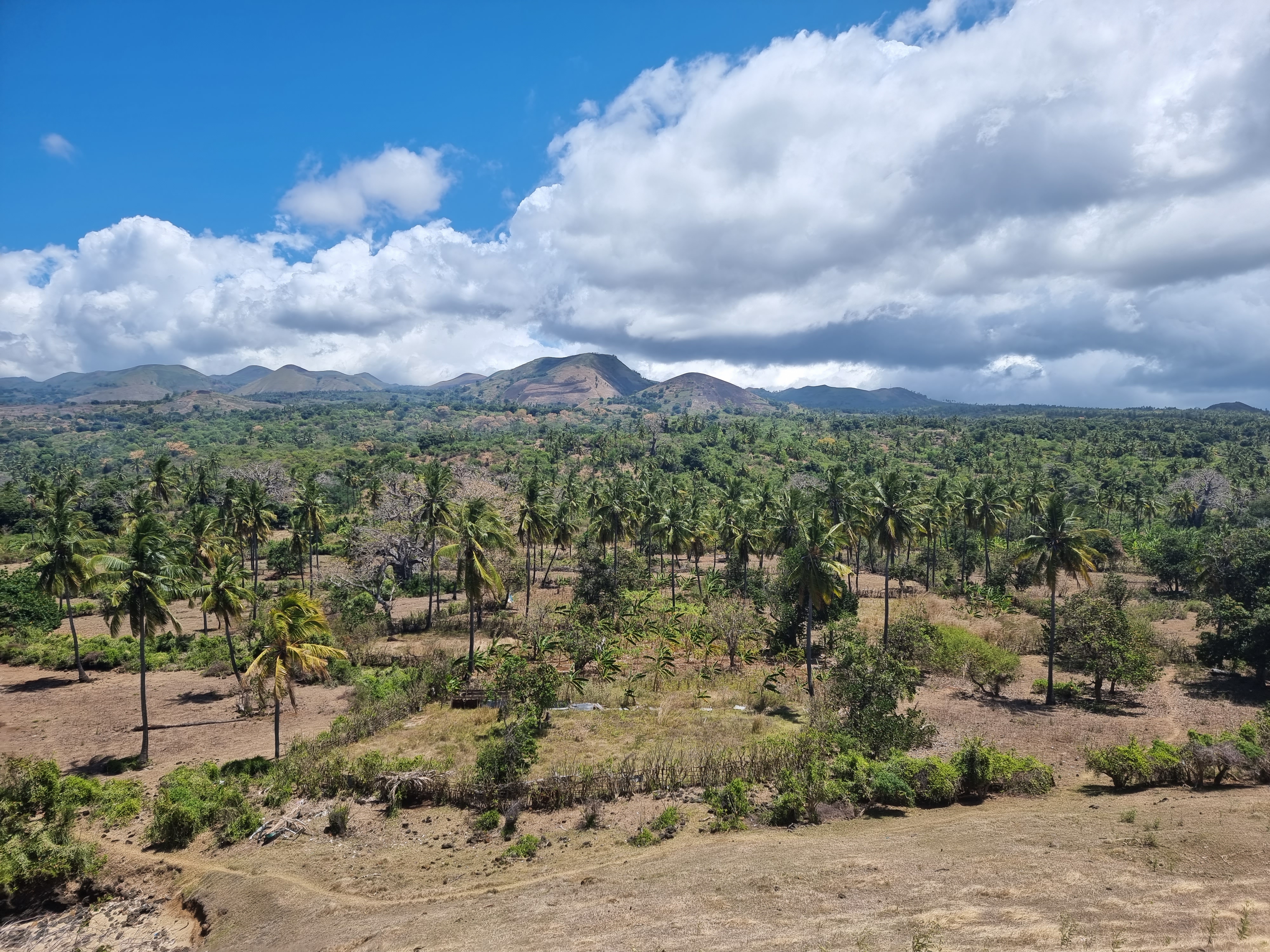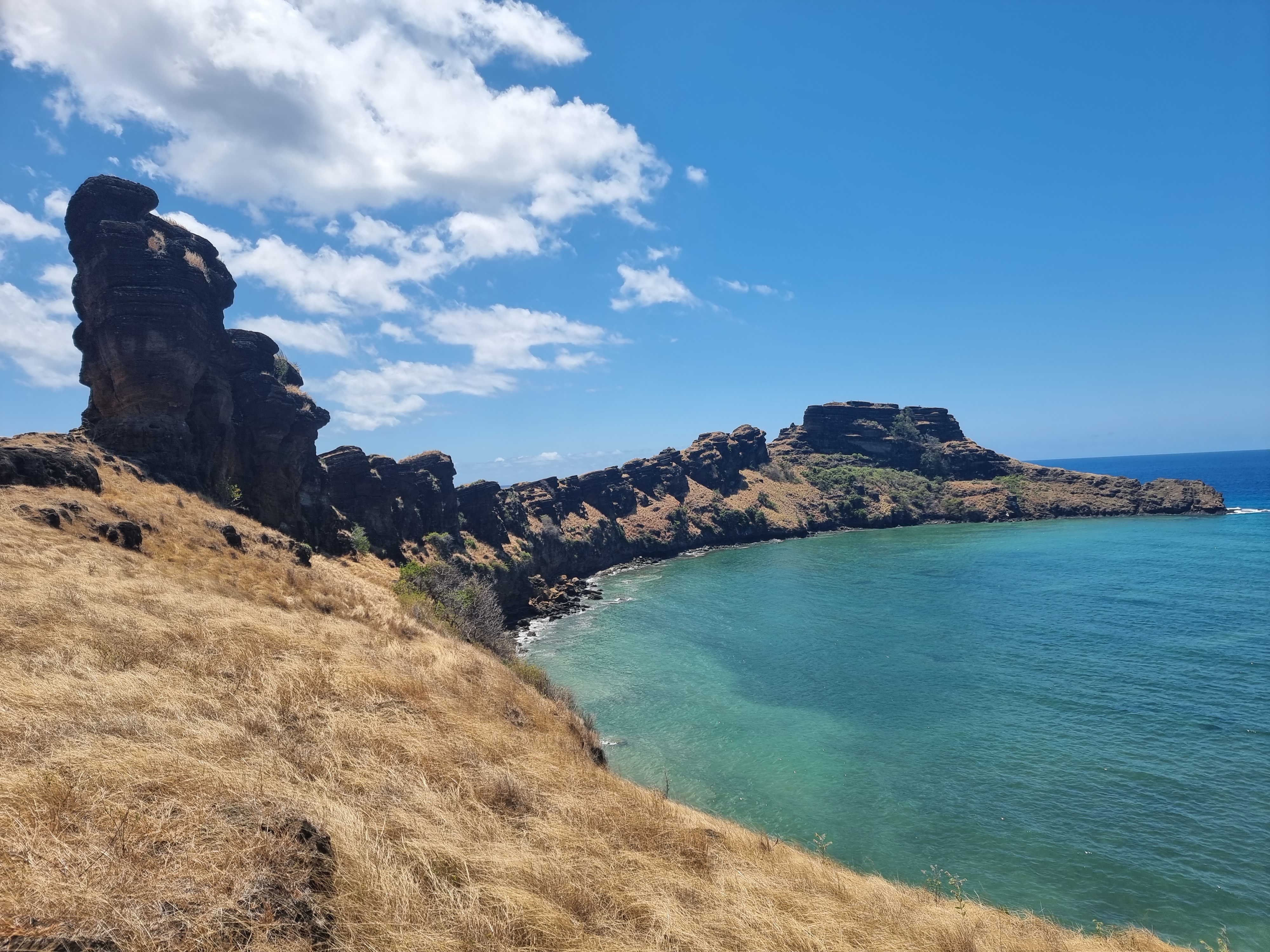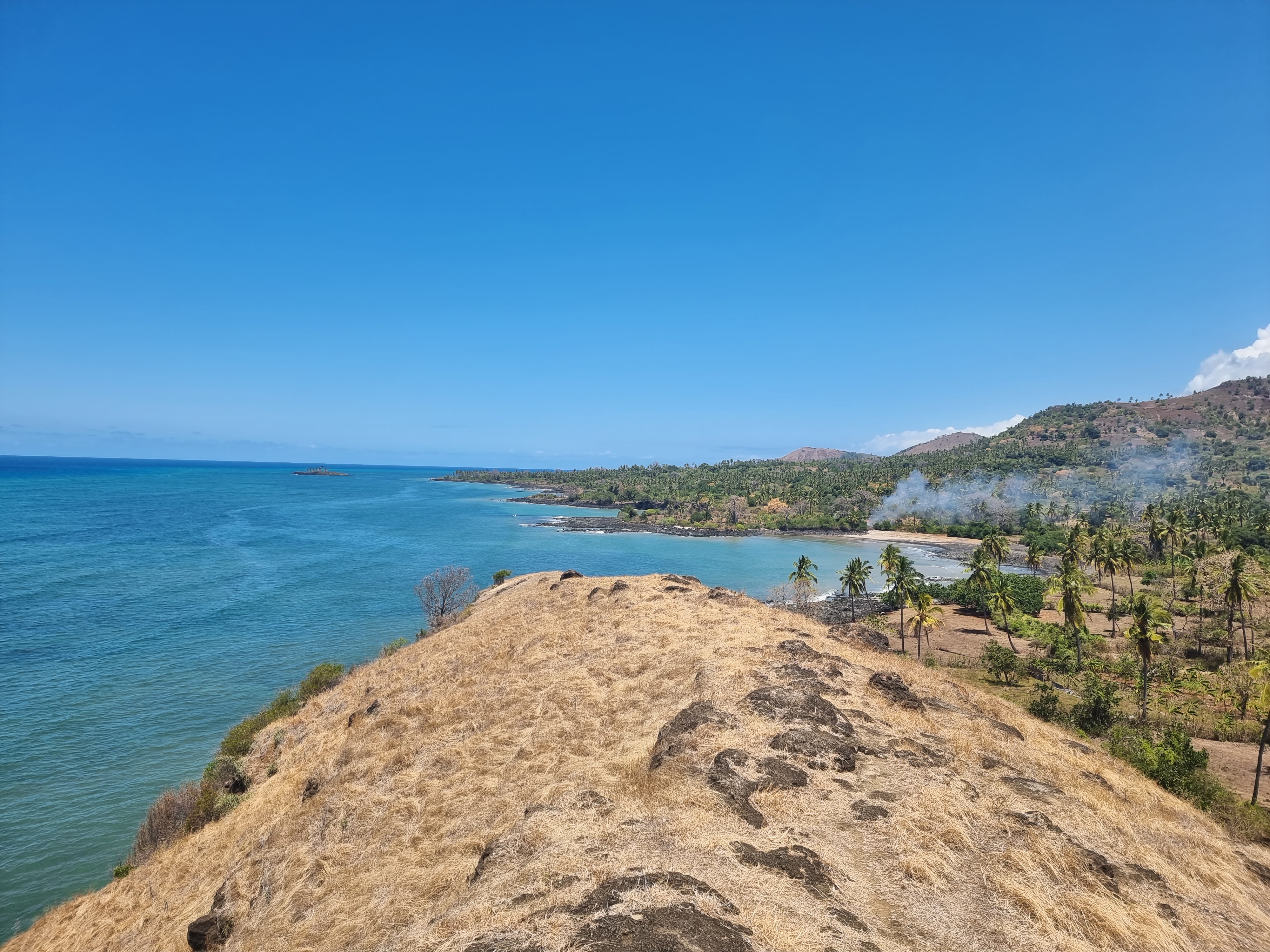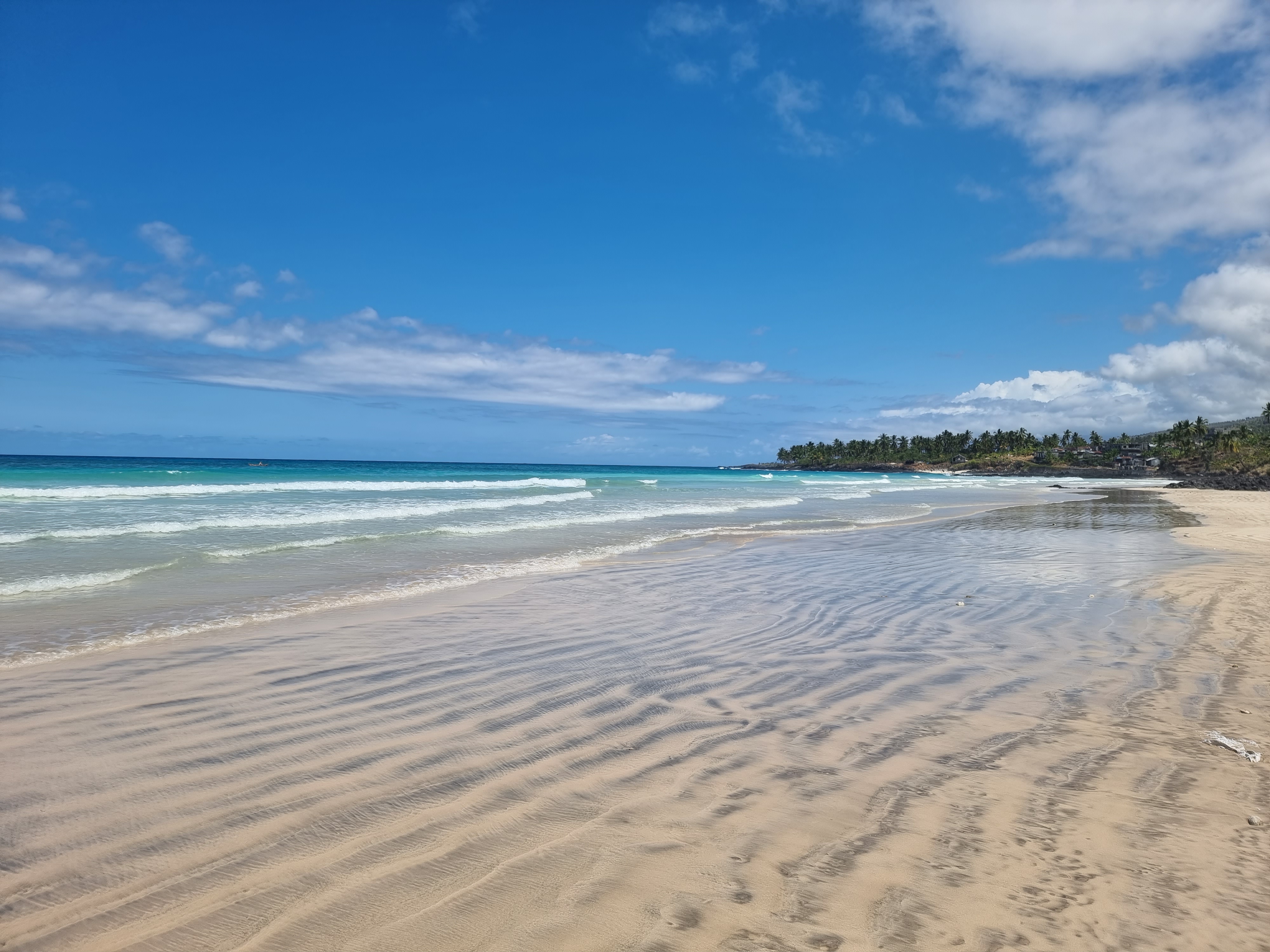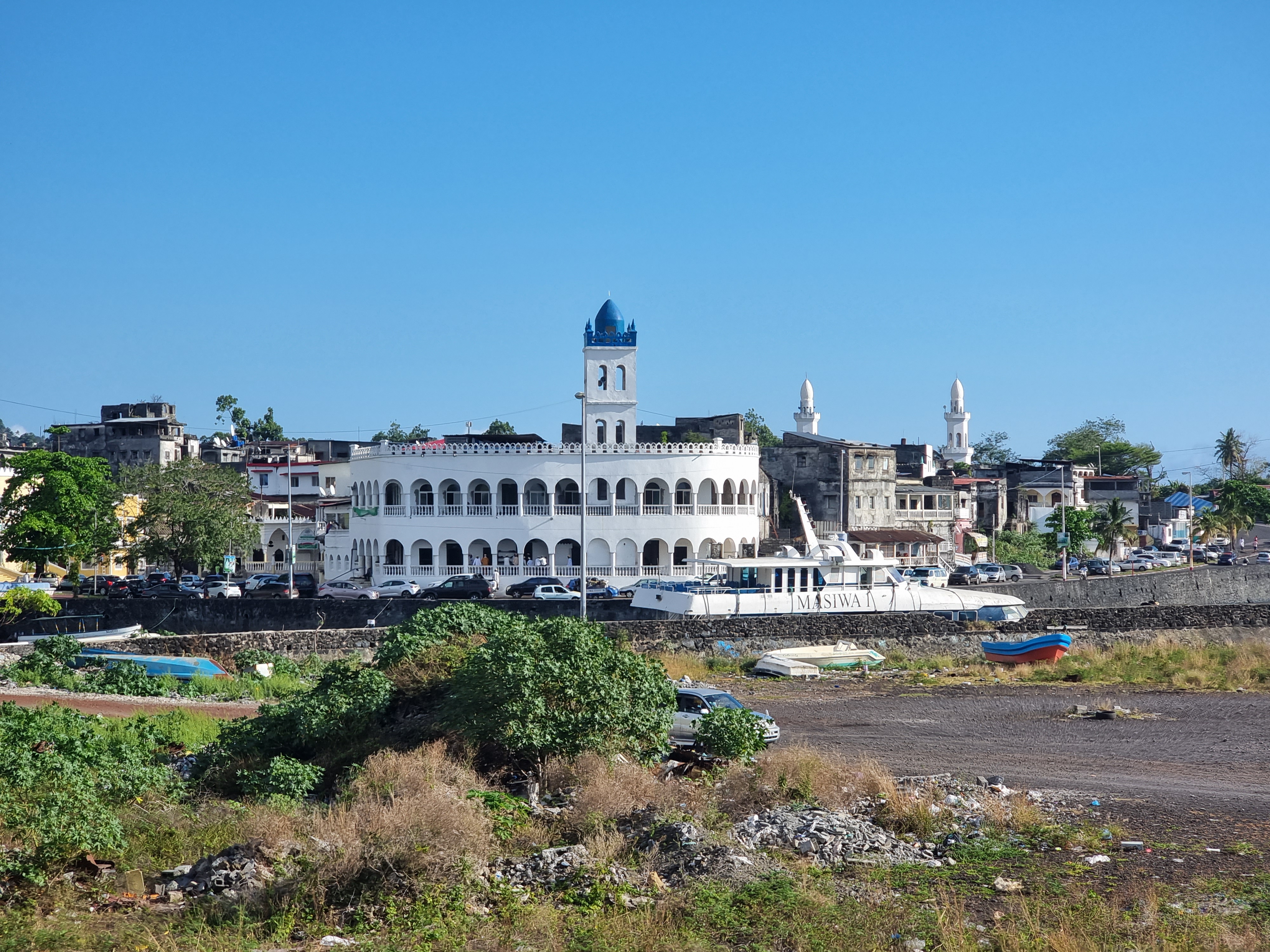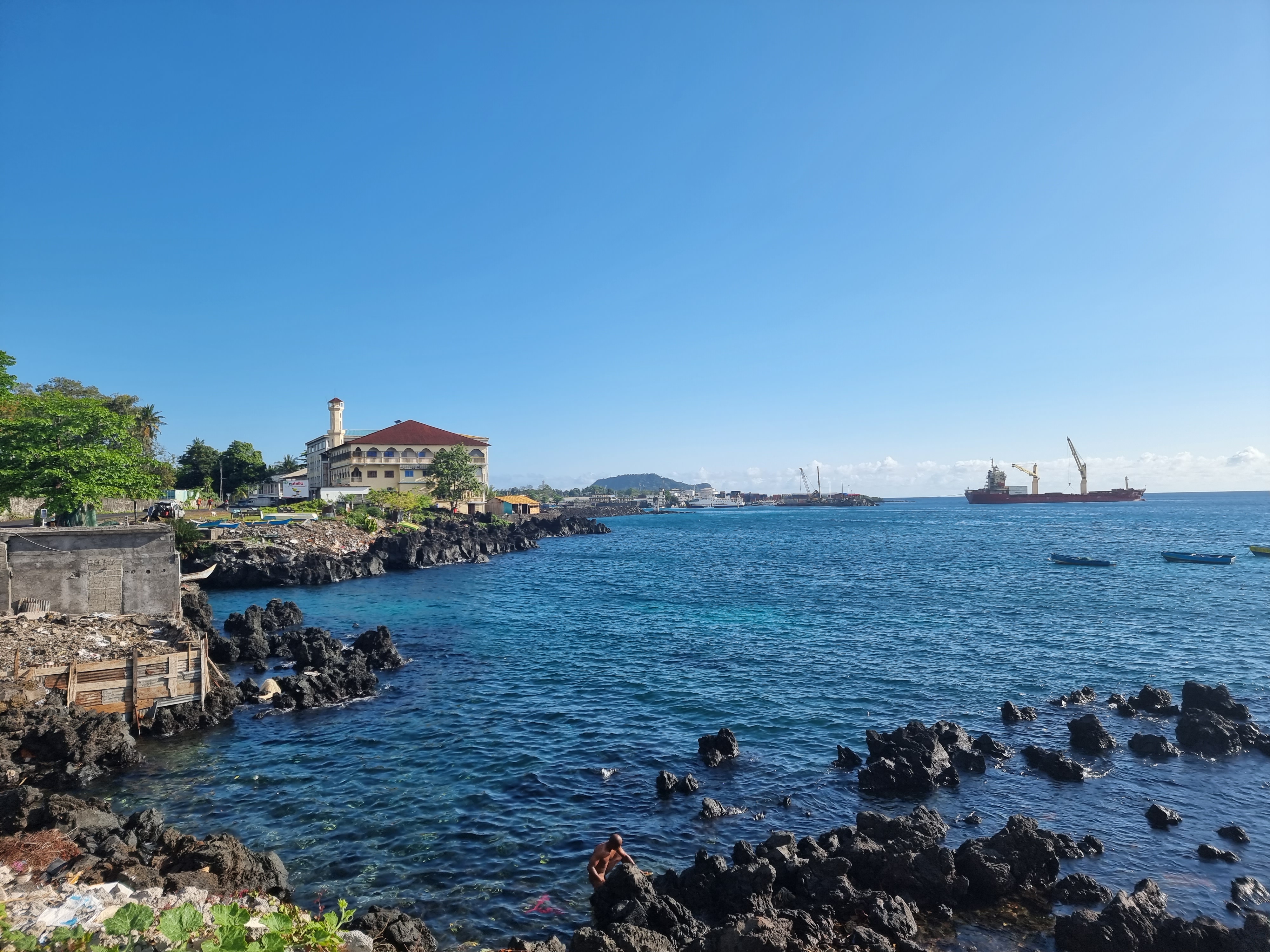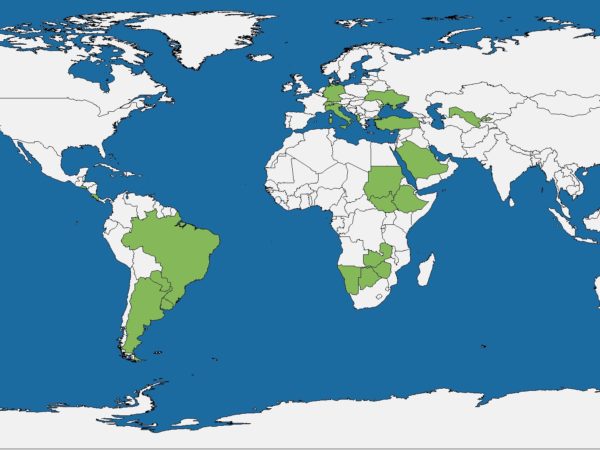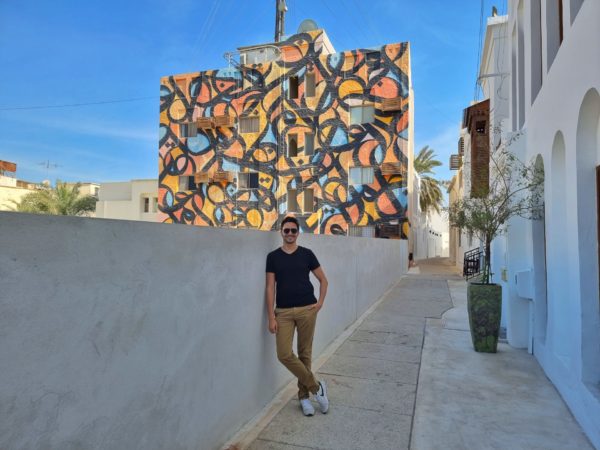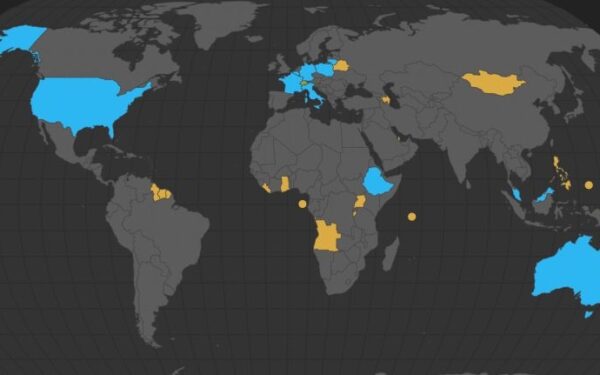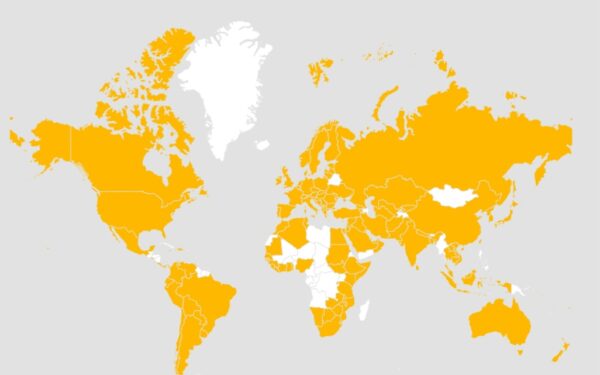Trip Report: Comoros
Visited in September 2021
In the middle of nowhere in the Indian Ocean there is a small country called Comoros. The country consists of three islands (Grande Comore, Mohéli and Anjouan) and is located between Mozambique and Madagascar. Comoros is a country most people have never heard of, which is also the reason why the country has the nickname “the forgotten archipelago”. It’s no surprise therefore that it’s also one of the least visited countries in the world. Only a few thousand tourists arrive in this former French colony every year.
To be honest, I also had never heard of this country before I started counting countries. Just like a large majority of people, when I thought of the Indian Ocean, countries like Seychelles, Mauritius or Maldives came to my mind. Countries that, unlike Comoros, attract hundreds of thousands of tourists every year.
The fact that Comoros is mostly free of tourists, however, does not have to be a disadvantage. At least I imagined dreamlike white beaches next to turquoise water. Just like in Seychelles, but without having to share them with other tourists. I was excited to see what would await me in my 121st country, which marked the end of an eight-day trip to Africa.
Arrival and PCR test in Comoros
Prince Said Ibrahim International Airport in Comoros is served by only three countries: Ethiopia, Kenya and Tanzania (plus La Reunion and Mayotte). In my case, it was an Ethiopian Airlines flight that took me to the country’s main island of Grande Comore. The flight was pretty much empty. I would estimate that only about 10% of the seats were sold and I dare to doubt that it was only due to the pandemic.
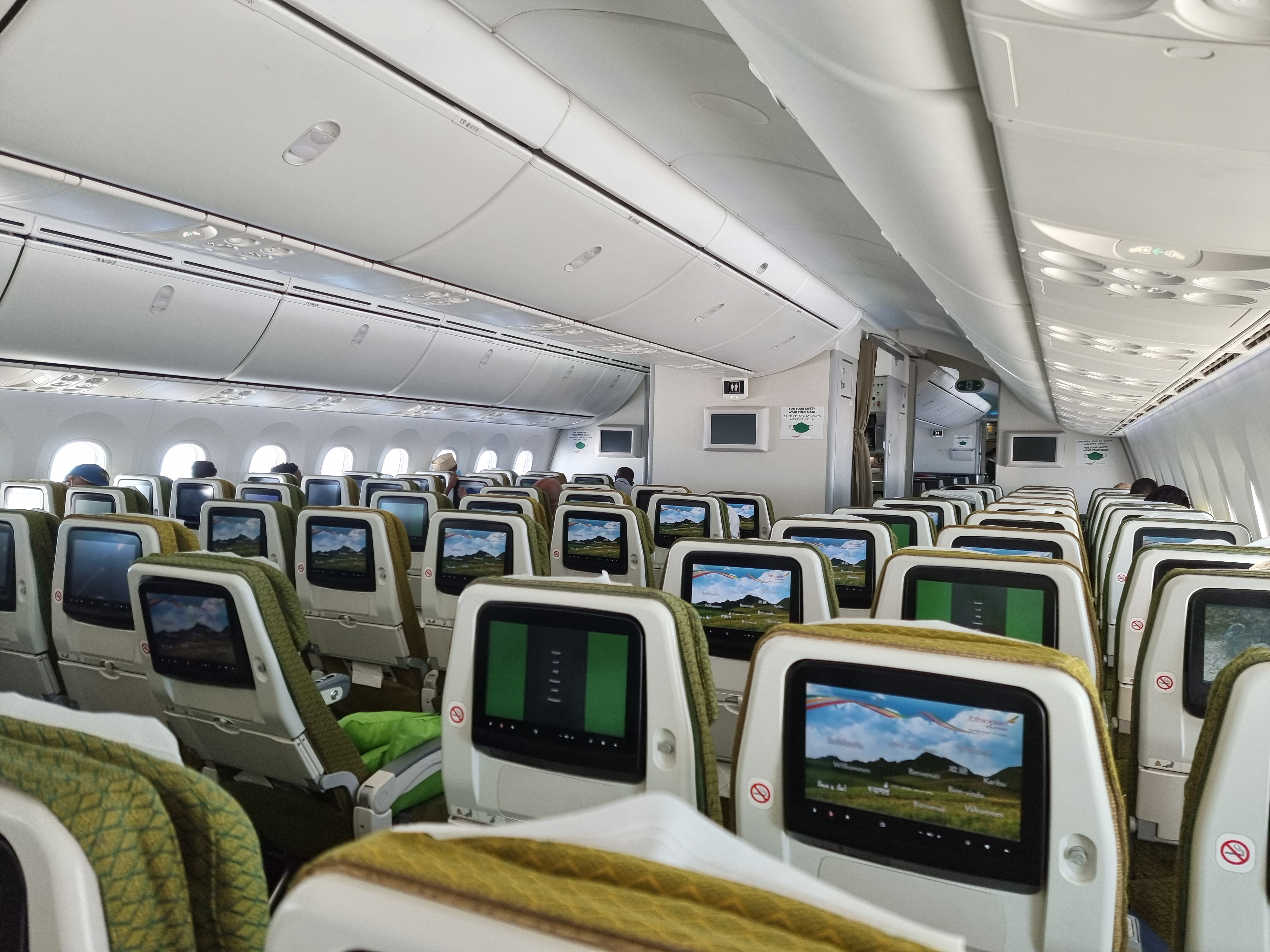
As an experienced traveler, I know that in these countries, which hardly see any tourists, it pays to lose no time after landing and get into the airport terminal as quickly as possible. Despite the lack of arriving passengers, I hurried and passed as many passengers as possible along the way. After all, the whole immigration process, where I paid the €30 for my visa on arrival, took forever. I would estimate that those who arrived there last had to wait at least two hours until they could finally enter the country.
Time is money. Unfortunately, my time was already running out, because immediately after my arrival I had to go to the laboratory in the capital Moroni to do a PCR test. In Comoros, the theory persists that Covid-19 does not exist in the country. Nevertheless, every passenger has to present not only a PCR test result when entering the country but also one when leaving.
The reality is that the pandemic has become a business model in Africa. I have never understood the point of outbound passengers needing a PCR test when the final destination does not require one for entry. However, these tests do generate a lot of money to these African countries so that I suppose that these exit tests will remain mandatory for a while.
Since I did not want to take care of the organization of the PCR test in Comoros, I hired a guide named Said. Another reason was that I needed a driver. The sights of Comoros are spread all around the island and both public transportation and getting from one place to another by cab would be challenging. Therefore, it was worth it to pay Said €30 each for the airport transfers plus the organization and pick up of the test, plus €100 for a full-day island tour.
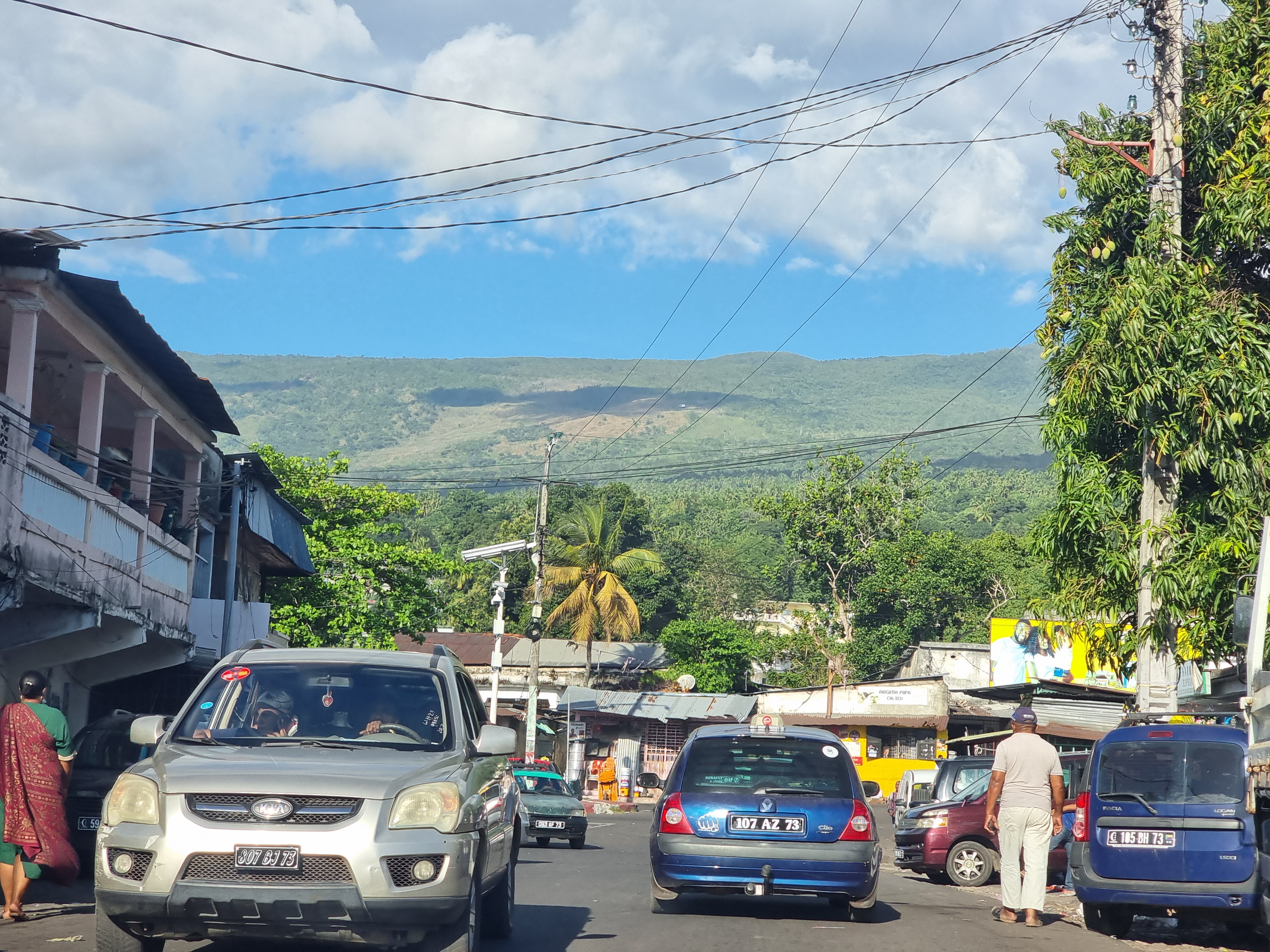
Another issue regarding the PCR test in Comoros is the turnaround time of three, not hours, but days!!! Normally, if you have a flight on Saturday, you need to do the test on Wednesday! Before I left for Africa, I got the test result at home in two hours. Here they take a whole three days to do it, which is pretty much the longest turnaround time I have ever heard of. And my problem was that I would only be in Comoros for 48 hours.
However, my guide Said said that it will work out. Until, after a forty-minute drive from the airport into town, we found ourselves standing in front of a closed lab. Said didn’t let that faze him, though, and disappeared for a few minutes. It then turned out that he was able to find someone to do the test after all.
While the doctor was preparing the swab, Said’s phone rang every two minutes. It annoyed the doctor so much that he wanted to send Said out of the room by giving him a nasty look and a wave of his hand. The constant phone calls were something that would happen all the time during my two days with Said. Said is someone who works in about ten businesses at the same time. Wherever there is money to be made, Said gets involved.
I basically knew that Said was not a real tour guide before I arrived in Comoros. However, it was just the hassle around the PCR test in Comoros that made me hire him. And after the test was finally done, the doctor assured me that the result would be available on time before my departure in two days. They also put the departure date on the test. So, no need to worry that the test expires if you need it to enter another country.
Accommodation on Grande Comore
Said drove me to my accommodation afterwards. Interestingly, there are almost no hotels in Comoros. Booking.com lists only three hotels on Grande Comore. That’s three more than a few years ago, when you couldn’t find any hotel at all on booking.com. One of these three accommodations is a resort, plus two normal hotels. If you search on Google, there are about five more. What they all have in common is a rather poor rating. The Golden Tulip, the only resort, is still among the better rated with its 7.2/10 rating.
Thanks to a traveler who was also just in Comoros, I learned about a guesthouse that was near the Golden Tulip. Le Voidjou was the name of the guesthouse and the price was €25 per night plus €20 for an authorization, which you need for your visa on arrival if you are not staying in a real hotel. The guesthouse was very basic and the bed some of the most uncomfortable I have ever experienced. It was okay for 2 nights, though.
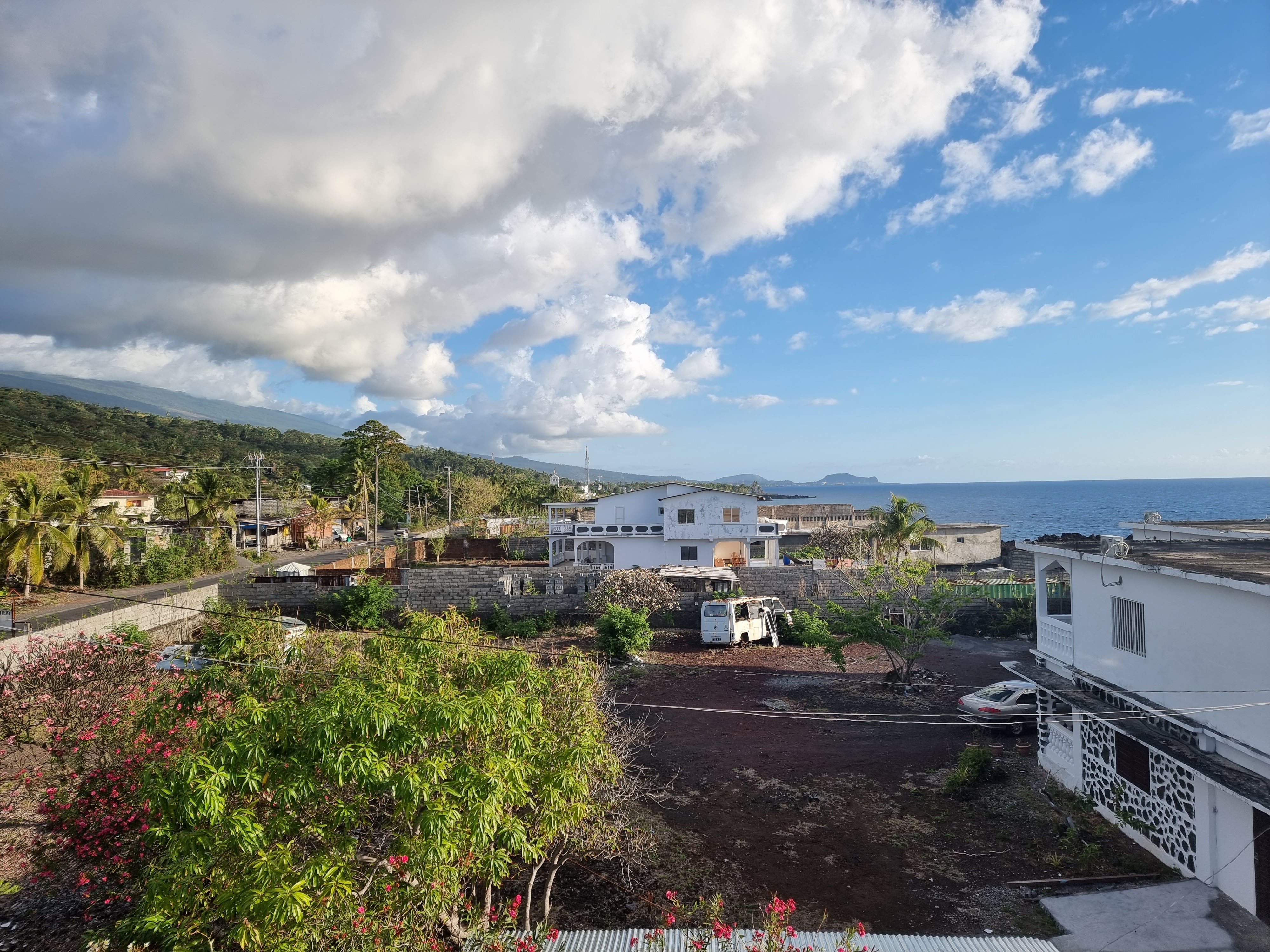
However, the hotel was also in the back of beyond. The proximity to the resort turned out to be a 35-minute walk. Thus, once the sun went down, there was nothing to do at my guesthouse. There wasn’t even the possibility to buy water or to eat somewhere. Said drove me to the Golden Tulip for dinner for this reason and then back again. Nevertheless, in retrospect, it was perhaps the cheapest, but due to the remote location also one of the worst options on the whole island.
I wonder if the Golden Tulip is the better option? Probably better than my guesthouse, but also three times as expensive. According to online reviews, however, the rooms are already very much in the years. The food is also unworthy of a resort. I can confirm this myself, as I “had” to eat there three times. If I had the chance again, I would stay at the Jardin de la Paix in the capital Moroni. It’s well located and the food was better there than in the Golden Tulip.
The night at Le Voidjou was horrible not only because of the uncomfortable bed but also because of the heat. The room was as hot as the Arabian Peninsula in July. There was no air conditioning but a fan that sounded like the Boeing 787 that brought me to the island. I was glad when the night was over.
Island tour of Grande Comore
The next day, I was going to see Grande Comore. I had already gotten a small impression the day before on the drive from the airport to Moroni and must honestly say that I was not really impressed. The island did not look particularly beautiful on that section. However, I knew that Grande Comore has some amazing corners and I couldn’t wait to see them.
So, what does Grande Comore look like? Those who imagine Comoros like Maldives will probably be disappointed at first. Grande Comore is an island consisting mainly of black lava rocks, green hills and a volcano. So it’s not like on this island you drive along kilometer long stretches of beach. There are sandy beaches, but they are often rather small and also scattered around the island.
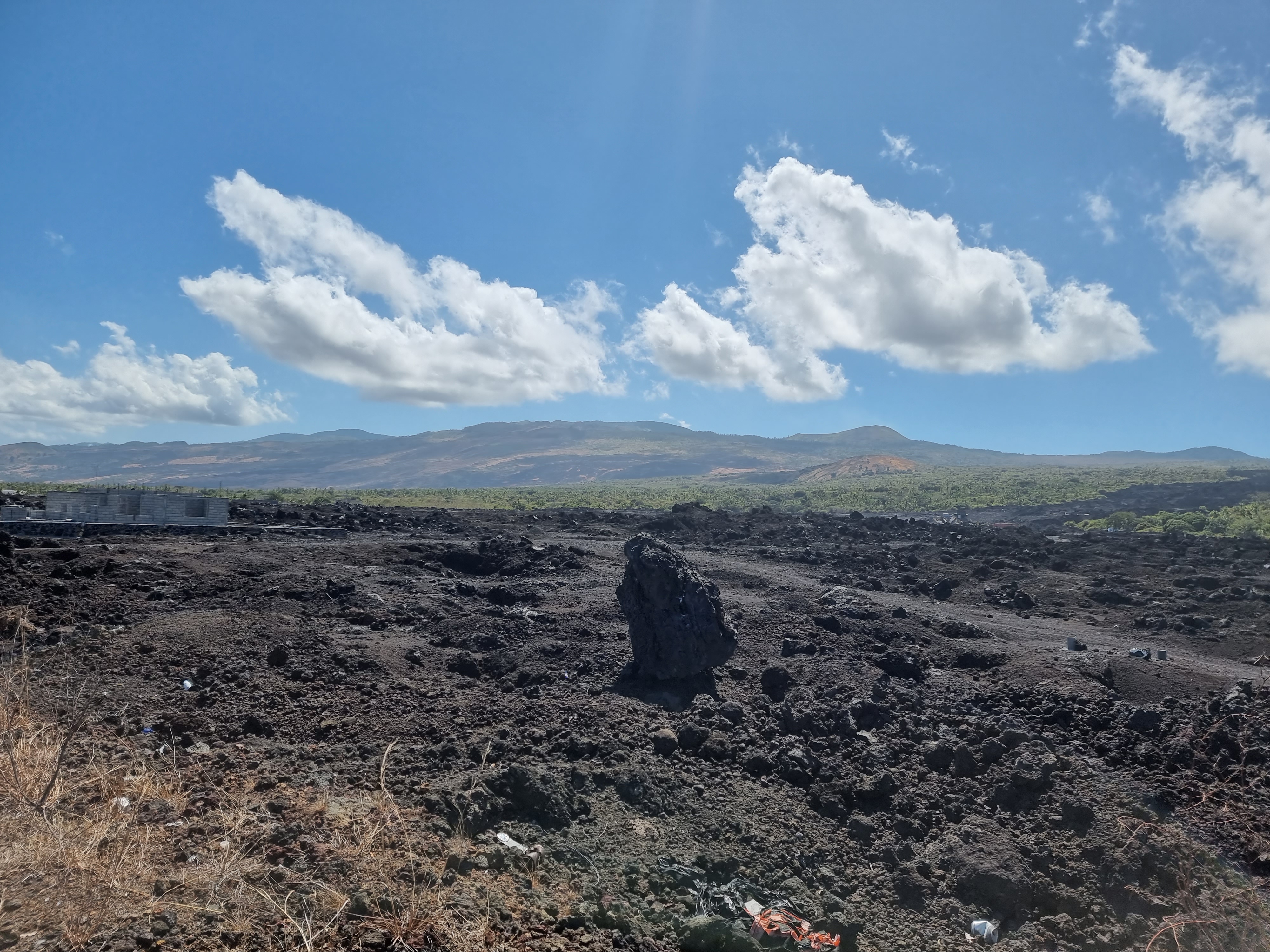
So, what can you do on Grande Comore? You could go to one of the beaches and spend the whole day there if you like. In addition, Comoros has supposedly some very good diving spots. However, most of the few tourists choose one of the two day tours on the island.
One is an island tour, the other is to climb the Karthala volcano. According to Said, Karthala is 4,500 meters high, but in fact it is only 2,360 meters. For this volcano hike you have to start at 4am and you are back at 7pm. Unless you spend the night on the way, which some people do. Nevertheless, I felt that an island tour would offer me more than climbing the volcano. I chose to focus on the northern and more beautiful half of the island.
The tour went about seven hours and we made several stops, most of which were interesting. For example, we saw dolphins jumping out of the water in Ntsaouéni and we also visited Lac Salé, a volcanic salt lake right next to the ocean. According to Said, it is 300 meters deep, although I was a bit skeptical after his wrong information about the volcano.
According to my online research later, the depth of the lake is unknown. If you throw a stone in, you don’t hear the impact on the bottom. A European and an American scientist once wanted to investigate the depth personally and went diving in the lake. They never returned to the surface…
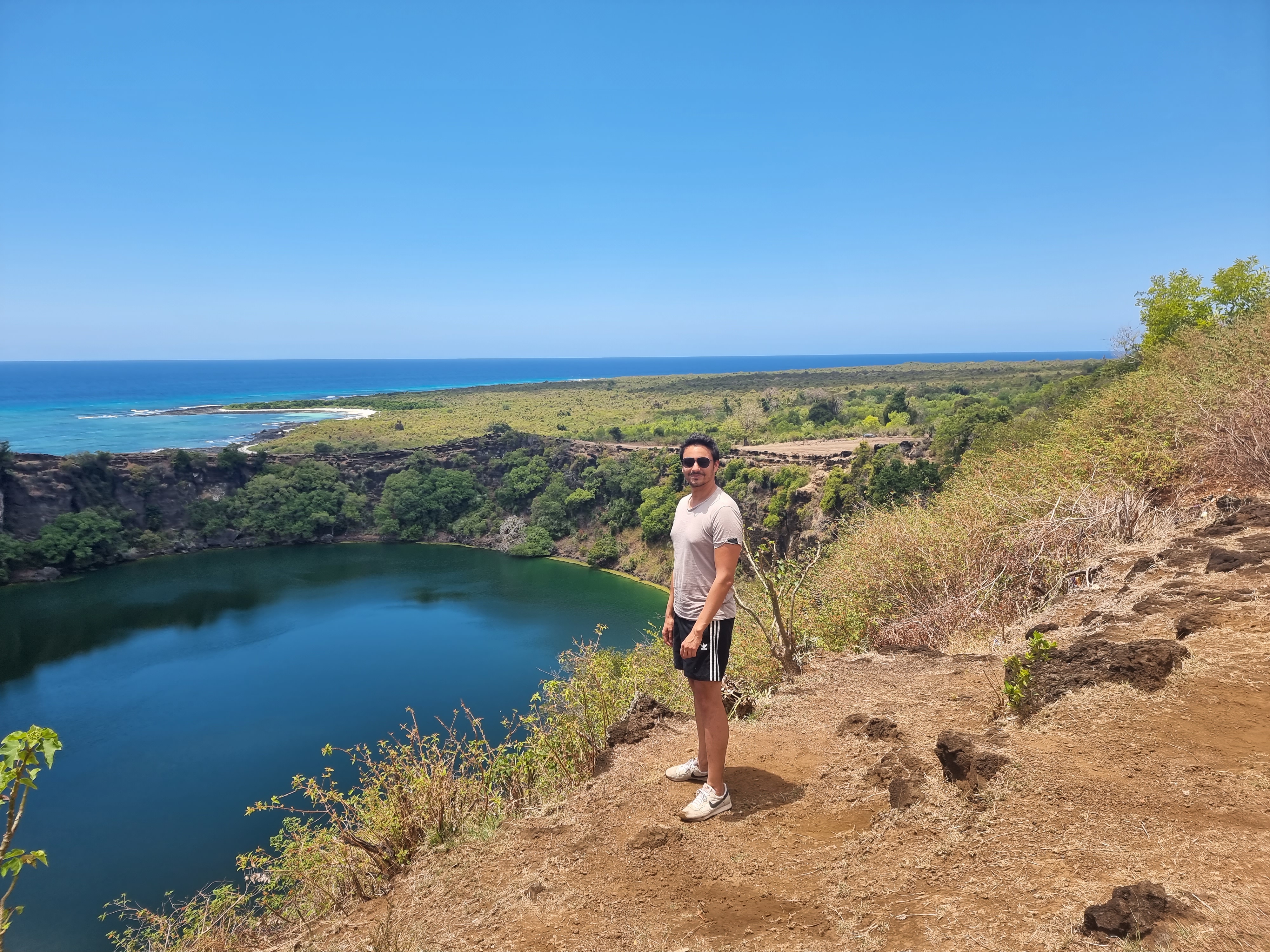
Highlights of the island, however, were definitely the beaches. Although Grande Comore doesn’t have many sandy beaches, the ones I saw were world class. Quality instead of quantity. I would like to highlight Maloudja and Bouni in particular. Both beaches are fantastic and the best thing is that you have them completely to yourself.
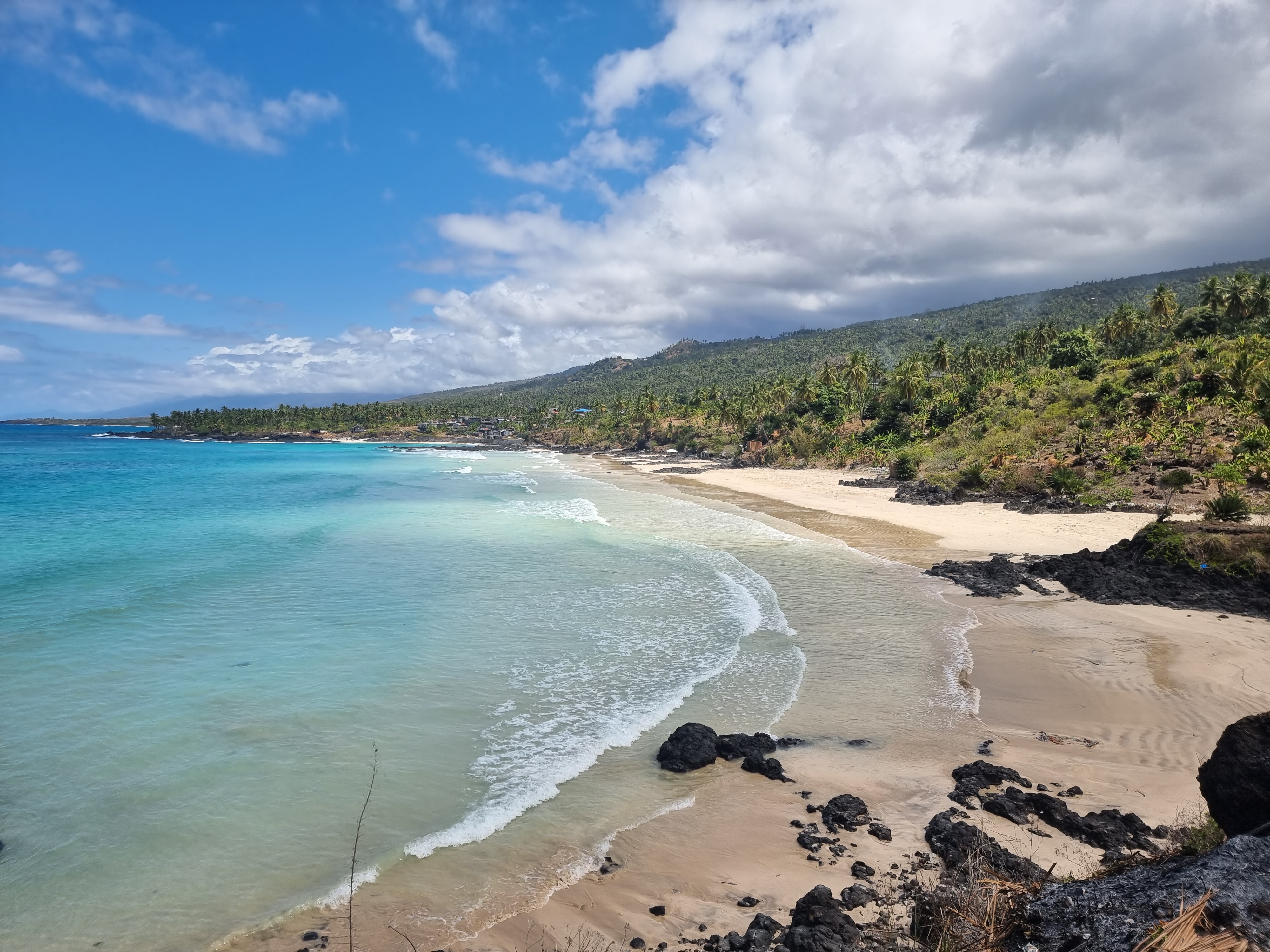
At each beach I took a swim for about an hour and that was absolutely necessary. Although the weather forecast showed only about 28°C for Grande Comore, the humidity made it feel much hotter. The 37°C I had two days earlier in Zambia seemed pleasantly cool in comparison.
On Grande Comore there are many small towns and villages spread all around the island. Although Comoros, with its 850,000 inhabitants, is one of the smallest countries in the world, it is also one of the most densely populated. In fact, Comoros is about as densely populated as India. Consequently, I saw many people during my trip.
Most local men wear a white robe and a taqiyah, the short, round hats that many Muslims wear. About 98% of the population of Comoros is Muslim, while there is also a small Christian minority living in the country. It was also interesting to see that many women wear a yellow wooden paste on their faces as a sunscreen. In another blog I read that the locals do not like to be photographed, which is a pity, otherwise I would have liked to capture this with the camera.
Interesting is also how Comoros earns money. The country is one of the main exporters of the ylang-ylang flower and its oil. Ylang-ylang is mainly used for the fragrance of natural cosmetics and perfumes. The plant is found in many places on Grande Comore and it really smells exceptionally good.
What is unfortunately also striking is the amount of garbage on the island. Comoros has a huge garbage problem, because no matter where you are on the island, you see mountains of plastic or rusty car wrecks standing around. Unfortunately, this also affects the fun a bit. Grande Comore would actually be an island that looks pretty, but the garbage ruins this beauty, at least partially.
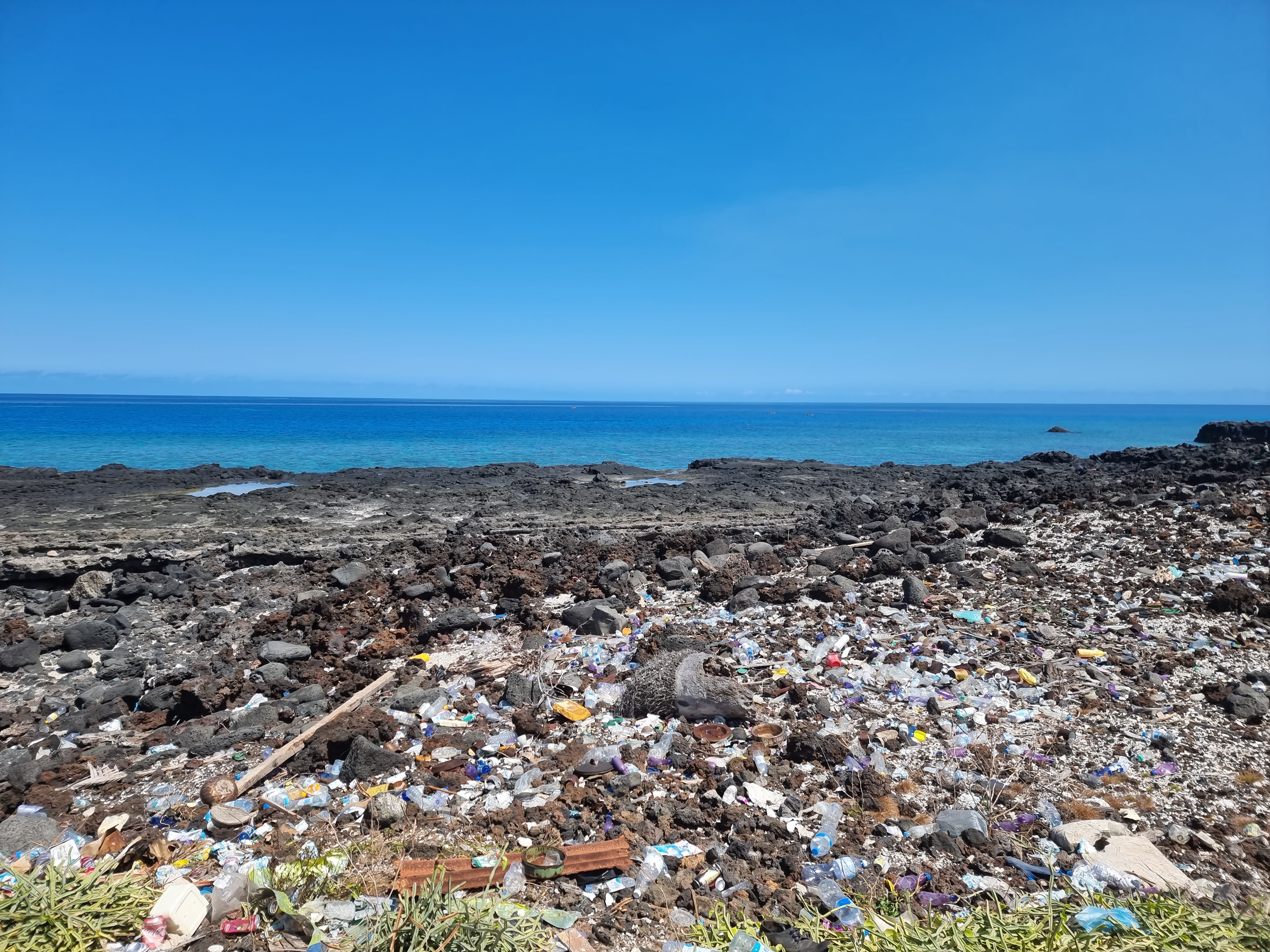
The total driving time around the northern half of the island took about three hours. The further north we drove, the more terrible the roads became. Seriously, the roads there reminded me of those in Guinea and are some of the worst I have ever seen. Both that and Said’s driving style contributed to me having to concentrate not to throw up.
We returned to the capital Moroni in the late afternoon, where I still had the opportunity to take some photos. However, there was not much time, because Said wanted to end the tour slowly but surely. Fortunately, I did not have the feeling that I had missed something here, because Moroni did not look particularly interesting to me.
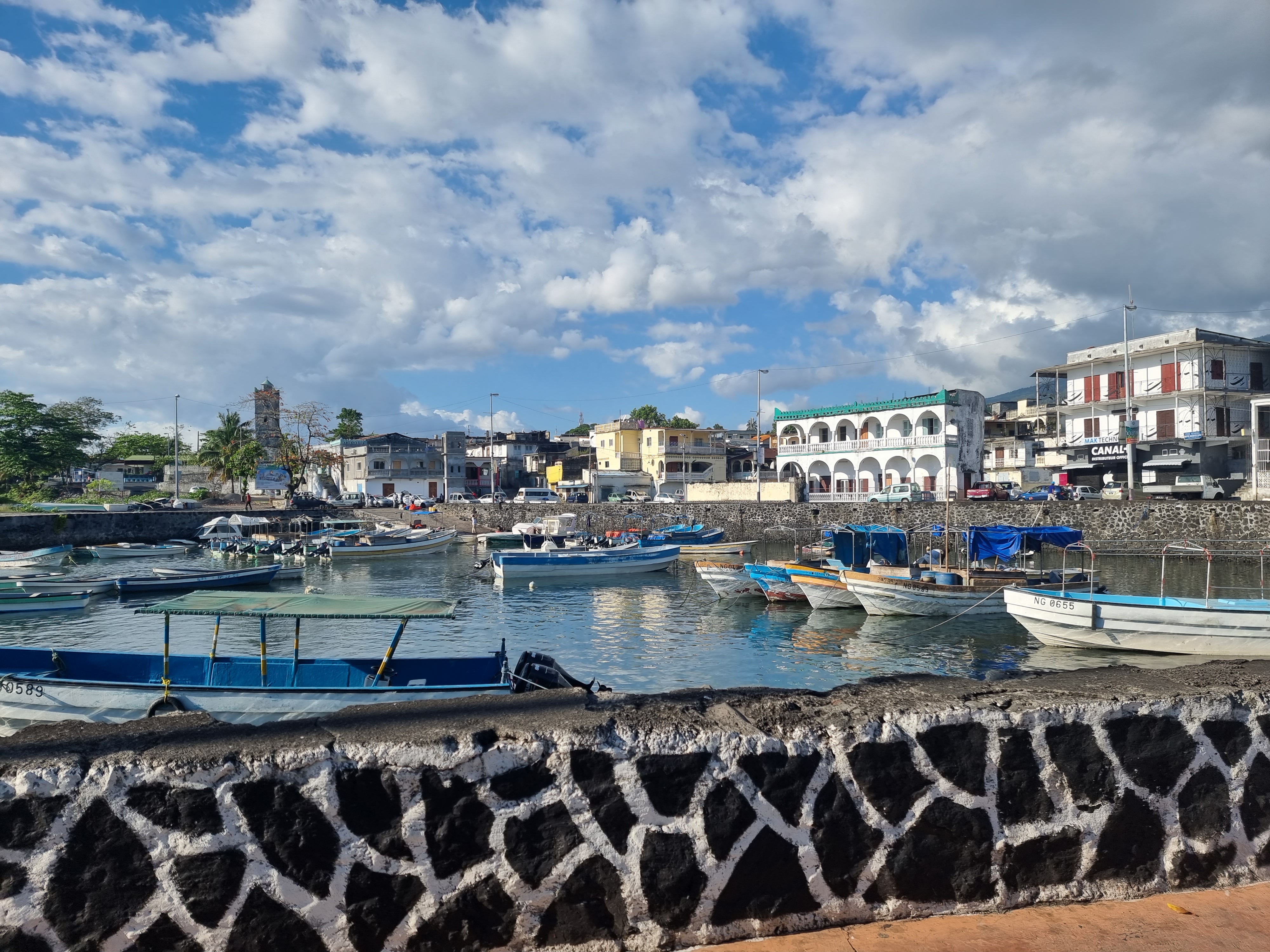
I got a late lunch in town before my tour ended. The food in Comoros restaurants is rather expensive and the Comorian cuisine does not offer much variety. Seafood-lover will be happy, though, because here they can eat lobster and the like at comparatively low prices. Too bad I don’t eat anything that comes out of the water….
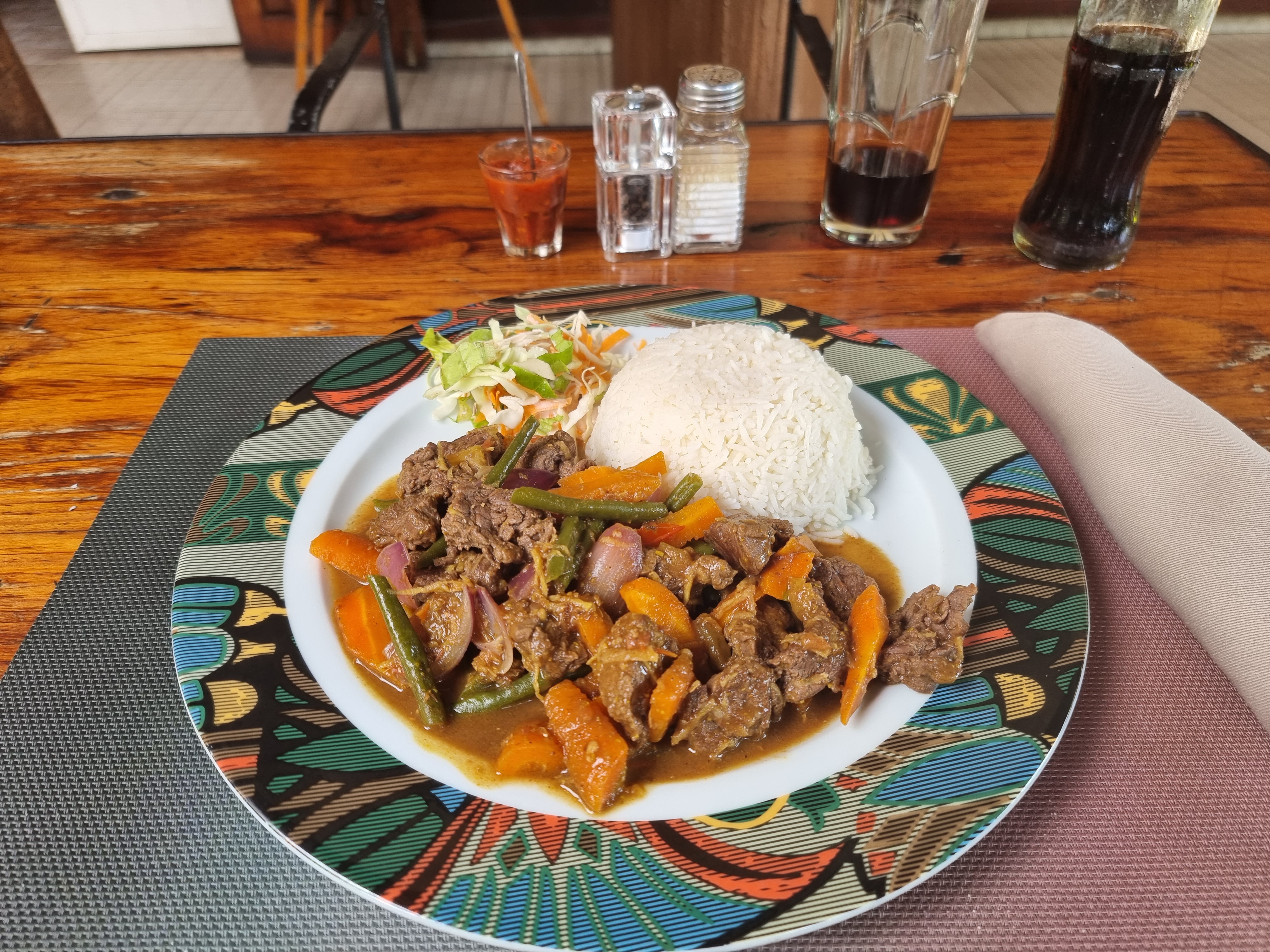
On the way back to my guesthouse, Said explained to me what the flag of Comoros means. It consists of a white crescent and four white stars on a green background, next to four colored stripes. Each stripe stands for one of the four islands. Four islands? Mayotte is the fourth. Mayotte belongs geographically to Comoros, but politically to France. In a referendum in 2009, the inhabitants of Mayotte were in favor of being an overseas territory of France. A circumstance that is difficult to bear for Comoros…
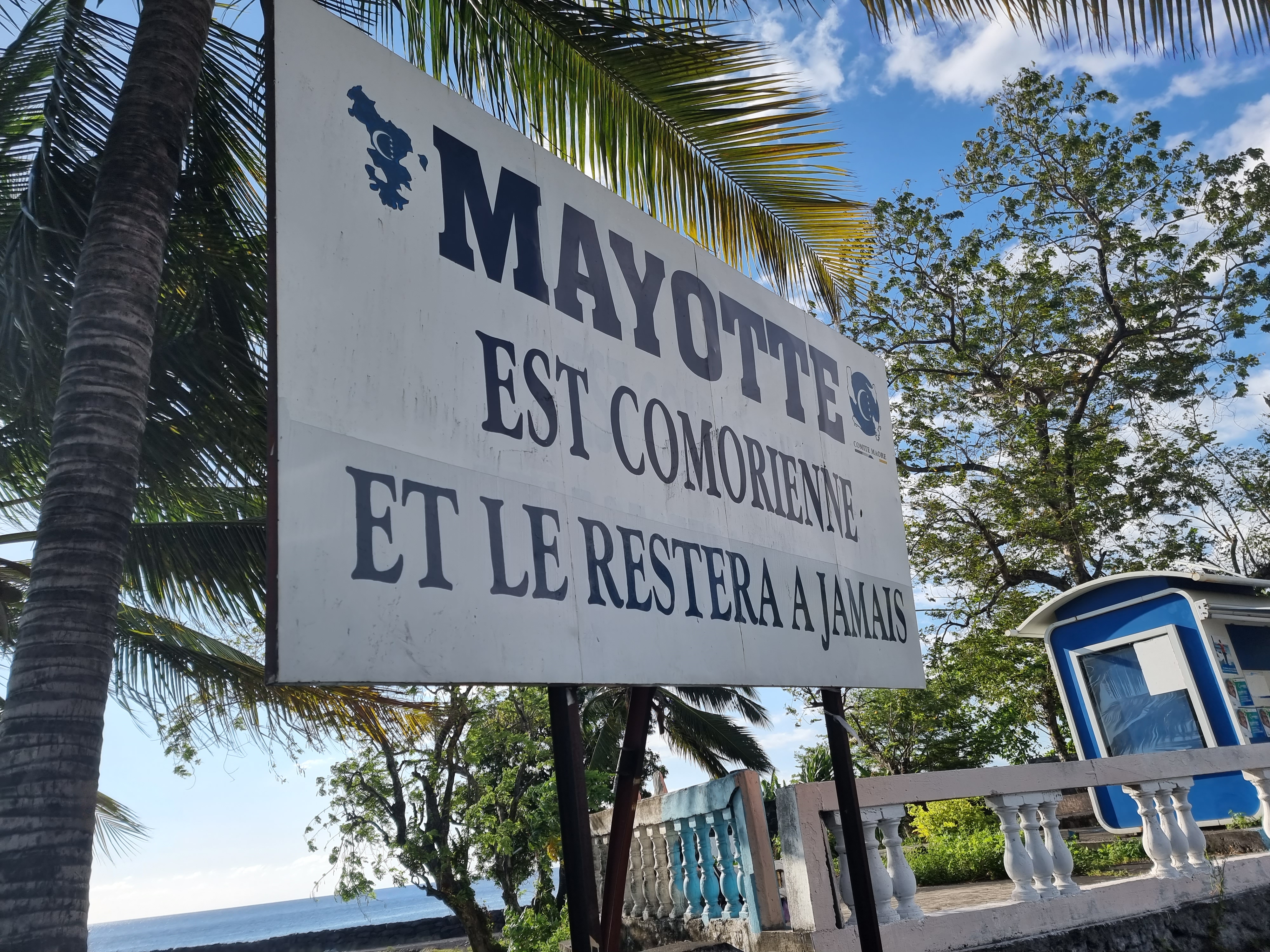
In the evening I took a cab from my guesthouse to the Golden Tulip resort. With the cabs in Comoros, you have to be lucky that one passes by with a free seat. Cabs usually only leave when they are full. “You won’t have a problem getting to the Golden Tulip, but on the way back, in the worst case scenario, you might wait an hour on the side of the road. Because the cabs leave full in Moroni and are most likely still full when they get past the Golden Tulip,” said Said.
Fortunately, Said offered to drive me from the Golden Tulip to my guesthouse later. He had to go to the Golden Tulip anyway, because he wanted to find new customers there. Getting around Comoros is a real problem if you don’t have a driver. I didn’t see any public transport, although Said said that buses exist. And just, cabs here also work on their own principle.
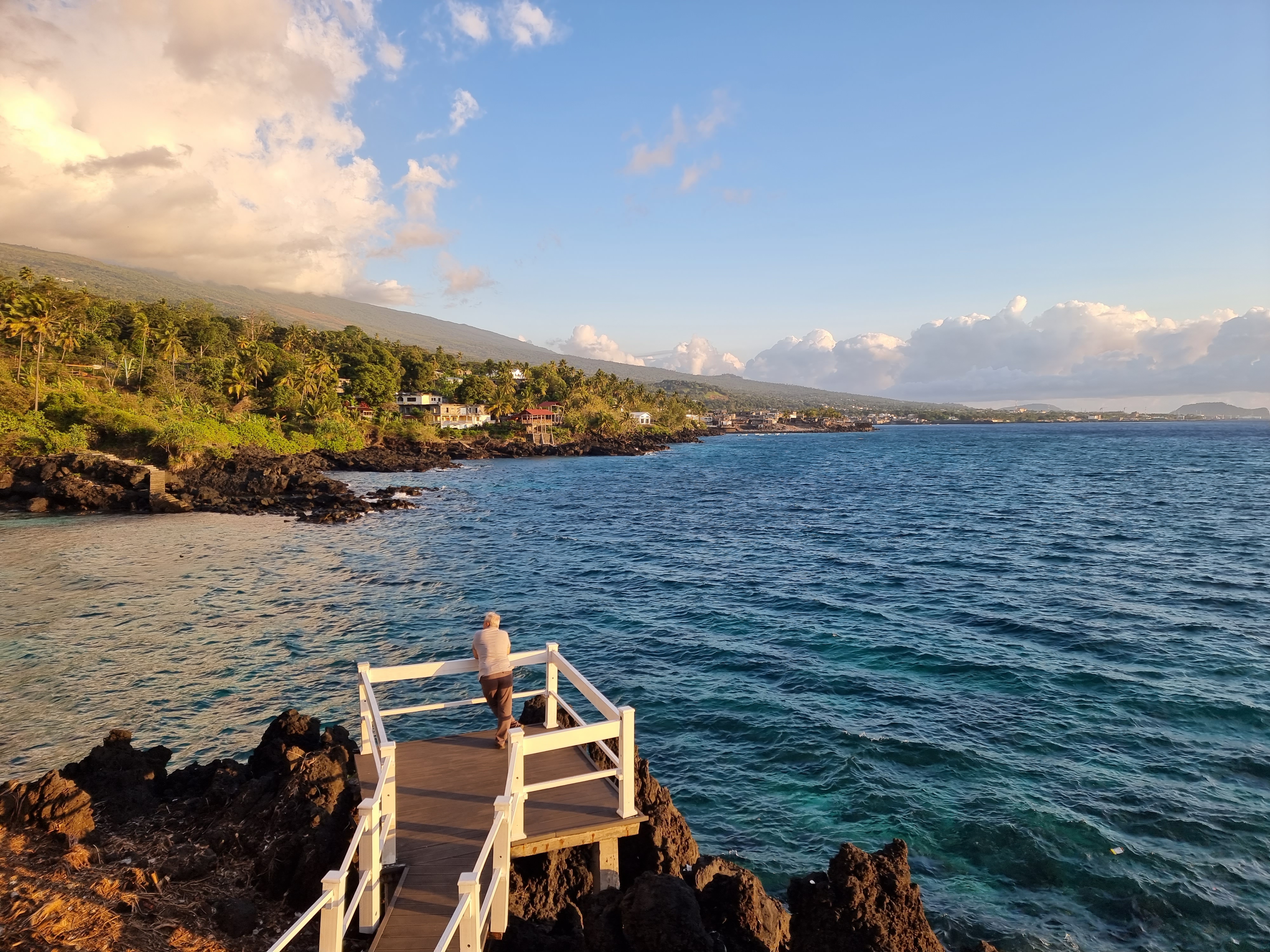
The worst was yet to come in Comoros: the second night in my guesthouse. Although it cooled down noticeably during the night and was windy, my room still resembled an oven. And thinking about my mattress, I eagerly looked forward to the Ethiopian Airlines seat that would be my bed the following night. In the end, the wide open windows ensured that the mosquitoes had the feast of the week with me. Thank God, Comoros has successfully controlled and almost completely eliminated malaria.
The next morning, Said picked up my PCR test result. Apparently, he had to wait in line for two hours before he finally got the paper. I was not sure if this was true or if he wanted me to give him a generous tip. In general, I felt that he wanted to overcharge me several times for something. For example, when we went to buy a sim card, he first charged me more than double the price. Only when I pointed out the correct price did he talk about a misunderstanding.
Would I use Said again? In times of Covid-19, I would still say yes. Said is well organized and very knowledgeable about the whole PCR testing procedure. So in these challenging times, it is certainly better to have a local to take care of it all. This becomes especially valuable for those who don’t speak French, because English is not very widespread on Comoros.
However, as soon as you can visit Comoros without a mandatory exit test, I would not recommend him anymore. In that case, I would just ask the hotel if they can organize a driver to take you around the island. Said charges €100 per day (if you negotiate him down, originally he wanted €150), while for a regular driver you pay around €50. But the quality of the tour should be more or less the same, even if the random driver doesn’t speak English. Said himself does not speak much, unless his phone rings, which happens every five minutes.
I spent a few more hours at the Golden Tulip on my last day before heading back to the airport in the early afternoon. And to be honest, I wasn’t particularly unhappy about having to leave already. I had the feeling that I had seen and done everything that had interested me in my short time.
Is Comoros worth a trip?
If one of my friends who doesn’t have the goal to visit every country in the world were to ask me, my answer would be an honest no. While my island tour was okay and I can’t say I had a bad time in Comoros, all in all I found Grande Comore rather unspectacular and one full day on the island was actually enough for me. Therefore, booking the expensive flights to Comoros just to do a full-day tour is not worth it in my opinion.
I can’t say anything about the other two islands, Mohéli and Anjouan. However, getting there is complicated and I would not return to Comoros just because of that. For this reason, Comoros is a country that will probably not see me a second time.
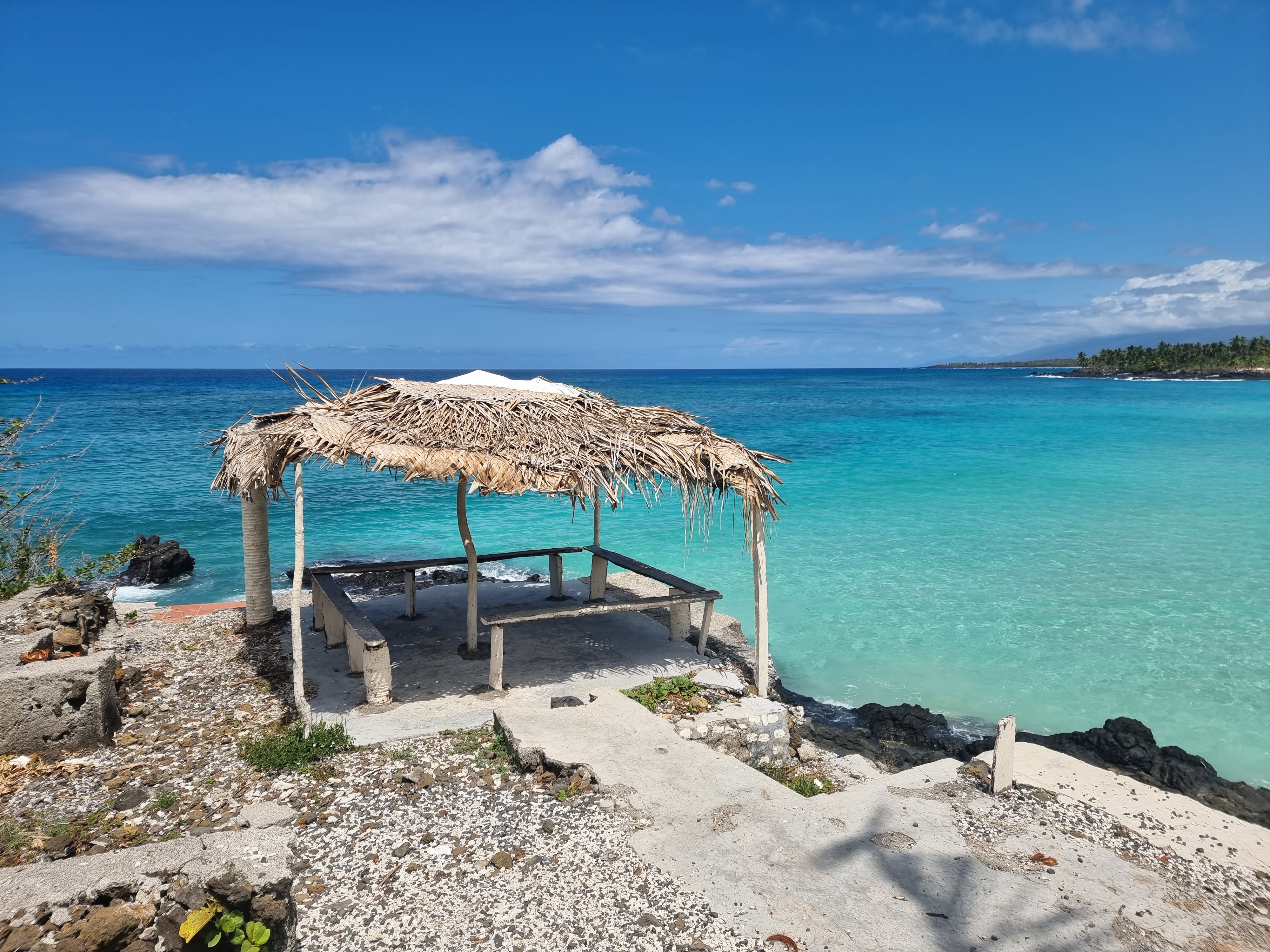
It wasn’t all negative though, not at all. The beaches I saw on Grande Comore were indeed extraordinarily beautiful and definitely the highlight of the island. So those who are bothered by overly commercialized destinations like Seychelles might love Comoros. After all, they don’t have to share the beaches with anyone here.
Having said all that, the bottom line is that Comoros is a country that has some nice corners on its main island and excellent beaches and nice locals. Moreover, the country can be considered one of the safest in Africa. However, the tourist infrastructure is almost non-existent, the garbage problem is annoying sometimes and it’s definitely not a cheap destination. For this reason, Comoros is in my opinion suitable for two types of tourists: those who want to go as off-the-beaten-path as it gets, and those who aim to visit every country in the world.
